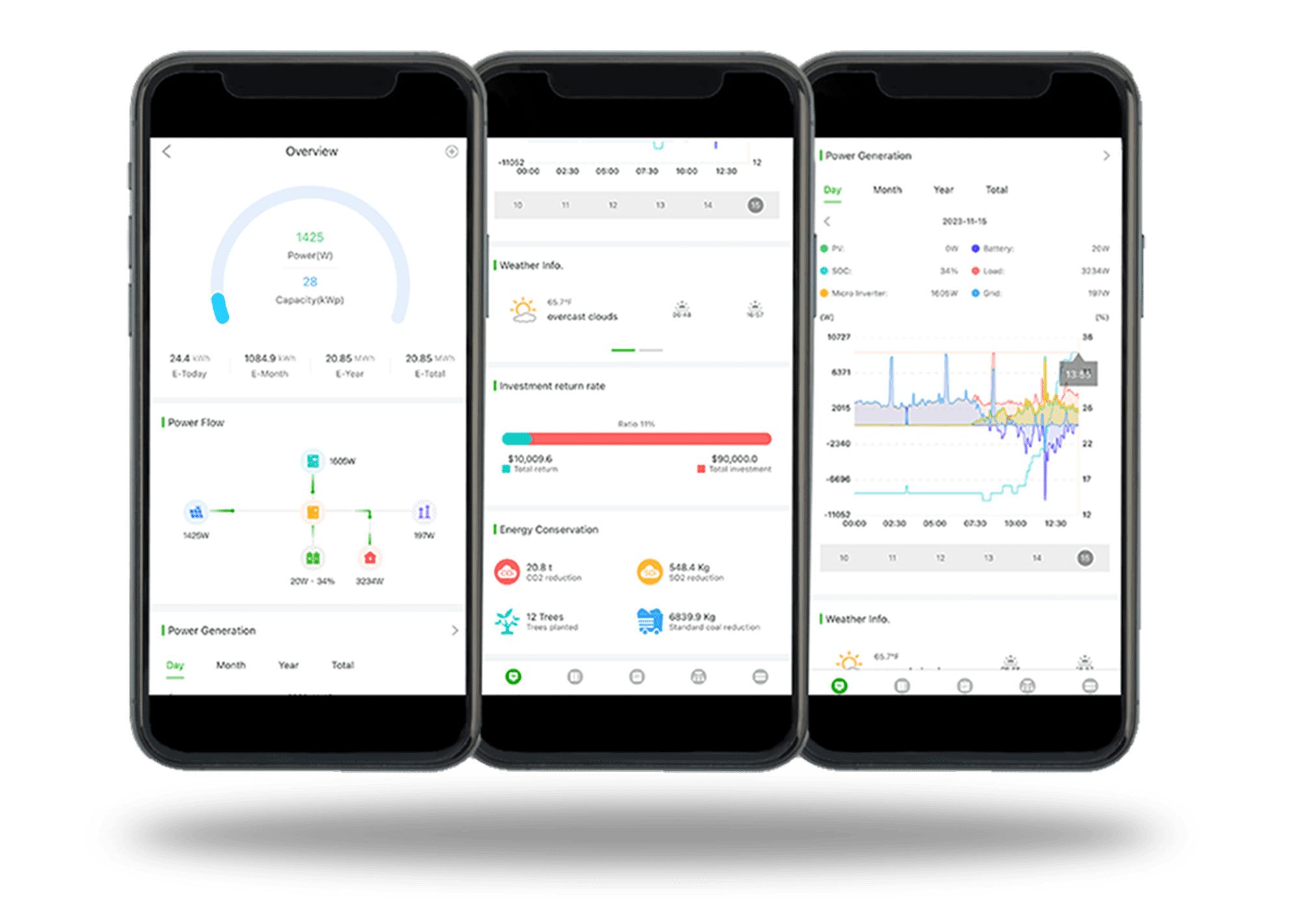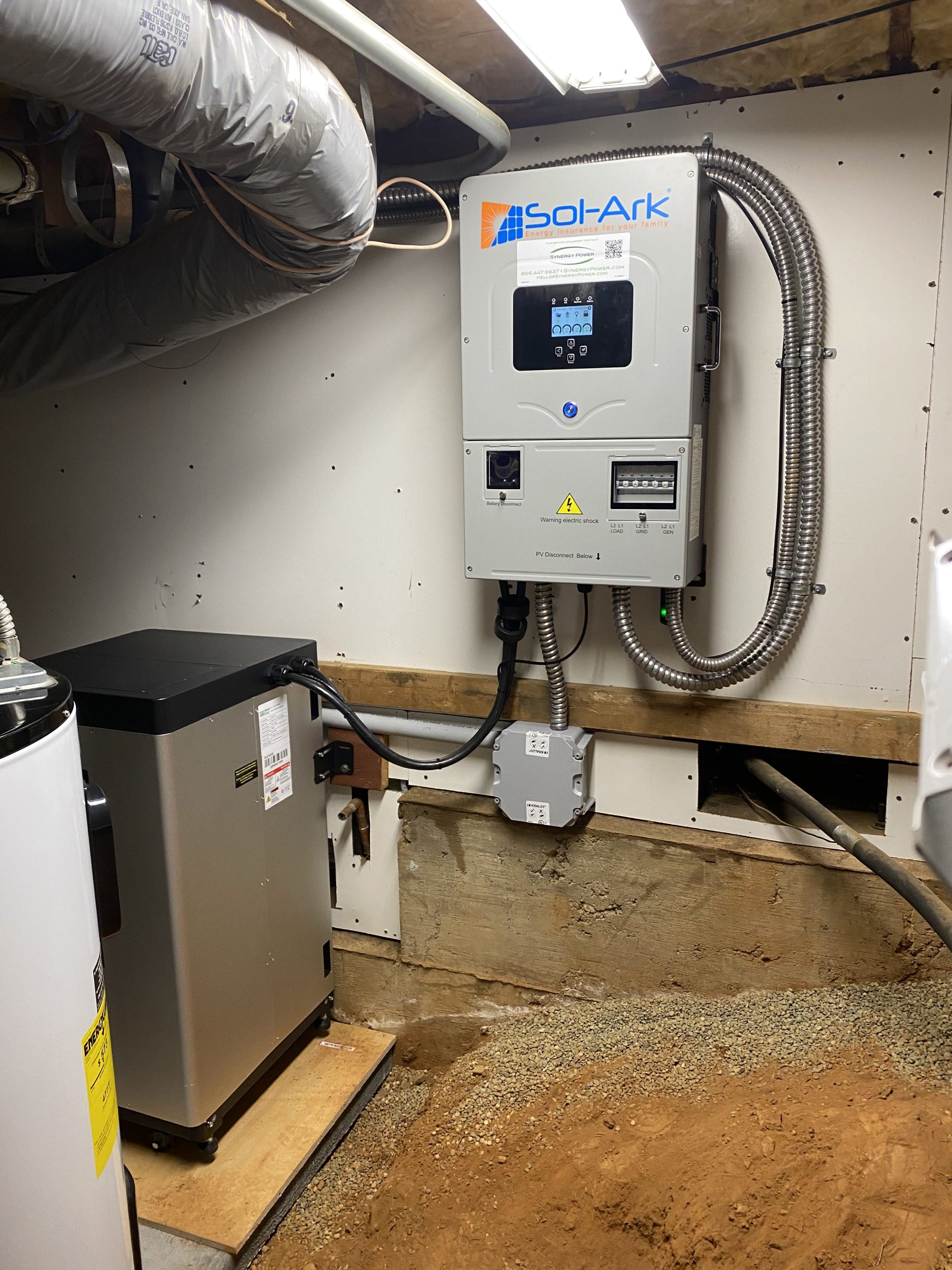Be Ready with

15K-2P Hybrid Inverter
The Sol-Ark 15K-2P Hybrid Inverter is a powerful, all-in-one energy solution designed for both grid-tied and off-grid applications. Offering 15 kW of continuous power, this inverter is capable of managing large residential loads and integrates seamlessly with solar panels, battery storage, and generators. It features advanced load management, peak shaving, and real-time monitoring for efficient energy use. With its rugged, weather-resistant build and user-friendly touchscreen display, the Sol-Ark 15K-2P provides reliable, resilient energy management for households seeking energy independence and flexibility.
Click here for full specifications!
Download the mySolArk App
The mySol-Ark app offers real-time monitoring and control of home energy systems, enabling users to optimize solar production, battery storage, and energy consumption to reduce costs and maximize efficiency. It simplifies energy management with detailed insights and time-of-use adjustments, all accessible via mobile devices.


Have any questions about the Sol-Ark products we utilize? View our informative videos (and their transcripts) recorded at Intersolar 2020 on Sol-Ark product comparisons and technical speculations.
Sol-Ark Inverter Introduction
Transcript:
TOM: My name’s Tom and I’m from Sol-ark and we’re the manufacturer of the Sol-ark 12k and 8k Hybrid inverters and–so our inverters are some of the most efficient in the world.
We really care about a lot of feature set, we want a rich feature set that will last, do a lot of things for our customers. AC couple, DC couple, very powerful, not a small inverter and very user friendly and easy to install. So, it’ll work with generators, it’ll do load shedding, it’ll do 120, 240, 208; soon 3 phase, peak shaving, time of use, you name it, we work with all kinds of batteries and the thing is we just keep trying to innovate because we want a really good product for our customers and for you guys.
Product Comparison (Vs. Tesla)
Transcript:
ERIC: Tell me a little bit about your product compared to what we see out there like Tesla.
TOM: Ok, so, Imma give you a chart that basically, there’s a chart that compares a lot of different solutions out there. Tesla and–Tesla’s a good product out there, it’s decent. There’s just a few things not so great about it, is when you lose power it glitches all of your electronics. We’re a UPS grade Hybrid inverter, so when you lose power we glitch– we don’t glitch the electronics. We have a–
ERIC: So, my computer’s not going to go off?
TOM: No your computer’s–you might see the lights flicker a little bit, but your computer’s will stay on, you’re not gonna have to reset the time on all the different clocks, your DVR, that’s the key thing. I’m not gonna lose internet or my DVR, that’s the two key things. The other thing is we’re much more efficient and we work with generators. So, there’s less solar you have to install with about 5% less solar that you have to install with our system verses a tesla power wall, and people don’t realize, you know– Tesla that’s about 5 kW of an inverter per wall, so you need two of those Tesla Power Walls to equal one of our 12 kW systems and we still have more peak power to run those big appliances. So, that’s–those are some key things.
ERIC: Start an air conditioner or something big like that.
TOM: Yeah, start–maybe not a huge massive 5 ton
ERIC: Well pump? Well pump?
TOM: Oh, well pump, maybe some 2 or 3 ton air conditioners, those kind of things, no problem.
Battery & Warranty
Transcript:
TOM: Our systems—you don’t void the warranty if you lose internet. The other thing is with our systems you can use better quality batteries. They will last sixteen years instead of, you know, maybe 10 years and that is a big impact.
ERIC: Safer technologies.
TOM: Safer technologies as well as–you know–things that’ll cycle–you know–twice as many cycles out of it.
ERIC: So, lower cost of ownership over time?
TOM: That’s correct. When we compare a Tes—two Tesla power walls—Tesla power wall is priced low on purpose because they want them–a very good image. The problem is that when you get a Tesla installer they charge—it’s not—they charge a ton for the install–you know–because they’re not making much money on the battery, so–you know–being a bit careful of that. We’re priced similarly for similar capabilities. The problem is they’re not a UPS–you know–and they don’t work with generators, those kind of things. If we go to a comparison we only lose about 7% of the energy going from—into the batteries and out of the batteries, while Tesla loses about 13%, so you would have to upsize the PV array to account for that. In addition, the problem is, the batteries only last 10 years and you’re gonna have to throw the inverter and batteries away. So, verses I can keep the inverter and I can replace the batteries after 16 years, so if we include the cost of these type of things, you know, a Tesla Power wall excluding
install and excluding solar panels would be somewhere around $29,000 over a 16 year lifespan verses we’re somewhere about, you know, about $20,000. Again, with similarly—capabilities, so what seems to be inexpensive, looking at a website, when you look at the lifespan and the cost of ownership, very big difference—situations.
ERIC: Yeah, I think a few people fail to really look at what the cost over time will be.
TOM: Yeah
ERIC: As opposed to just like what’s the cost today.
TOM: Right. They look at just that sticker price they don’t see all the asterisks of install cost and other things and replacement costs, so–
ERIC: -and when you have the federal government helping you buy a better system and you have rebates helping you buy a better system, it’s like why not buy a better system?
TOM: Exactly, and that’s why I like that you guys use like lithium ion phosphate batteries cause they last a very very long time. They’re much safer and they’re perfect for time of use applications like in California.
ERIC: Absolutely..








